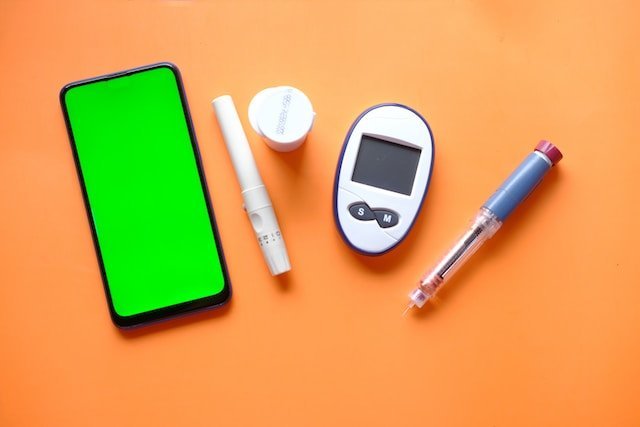Overview of Digital Eye Strain
Spending prolonged hours in front of screens has become a common part of our daily routine, whether for work, school, or leisure. This increased screen time can lead to digital eye strain, characterized by symptoms such as eye fatigue, dryness, headaches, and blurred vision. Addressing and preventing digital eye strain is essential for maintaining healthy vision and overall well-being.
Importance of Addressing Eye Strain
As more tasks are carried out digitally, the prevalence of digital eye strain has risen significantly. Recognizing the importance of addressing this issue is crucial for preserving eye health and avoiding discomfort associated with prolonged screen use. By implementing preventive measures and incorporating eye care habits into your routine, you can reduce the impact of digital eye strain on your vision and quality of life.
Understanding Digital Eye Strain: Causes and Symptoms
Digital eye strain, also known as computer vision syndrome, is a common condition that occurs when your eyes feel tired or uncomfortable after prolonged use of digital devices. The growing use of computers, tablets, and smartphones has significantly increased the prevalence of this condition. But what exactly causes digital eye strain?
Several factors contribute to digital eye strain. First, staring at digital screens for extended periods can lead to a reduction in blink rate, which causes the eyes to dry out and become irritated. Additionally, the blue light emitted by screens can further strain your eyes. Moreover, poor posture and improper viewing distances can exacerbate the discomfort.
Recognizing the symptoms of digital eye strain is crucial for addressing and preventing it. Symptoms often include:
- Eye fatigue and discomfort
- Dry, itchy, or burning eyes
- Blurred or double vision
- Headaches
- Neck, shoulder, and back pain
Early identification of these symptoms can help you take the necessary steps to alleviate the strain on your eyes.
Practical Tips to Reduce Digital Eye Strain
Reducing digital eye strain is essential for maintaining optimal eye health in today’s tech-savvy world. Here are some effective tips to reduce digital eye strain:
1. Follow the 20-20-20 Rule
This popular method recommends taking a 20-second break to look at something 20 feet away every 20 minutes. This simple practice helps relax your eye muscles and reduce strain.
2. Adjust Your Screen Settings
- Reduce screen glare by adjusting your device’s brightness and contrast settings to match the lighting conditions in your environment.
- Increase text size and ensure optimal color contrast to make reading easier.
3. Optimize Your Workspace
Position your screen approximately an arm’s length away and ensure the top of the screen is at or slightly below eye level. This encourages proper posture and reduces physical strain on your eyes, neck, and shoulders.
4. Blink More Often
Blinking promotes tear production, which naturally moistens your eyes. Make a conscious effort to blink more frequently, especially during long screen sessions.
Incorporating Eye Care Habits into Your Daily Routine
Incorporating consistent eye care habits into your daily routine can significantly reduce digital eye strain. Consider these preventive measures:
1. Regular Eye Exams
Routine eye exams help detect any potential issues early, allowing for timely intervention. They also ensure your prescription is up-to-date, which is crucial for clear vision while using digital devices.
2. Healthy Lifestyle Choices
A balanced diet rich in vitamins A, C, and E, along with omega-3 fatty acids, supports overall eye health. Additionally, staying hydrated can prevent dryness and discomfort.
3. Use Artificial Tears
If you experience persistent dryness, consider using artificial tears to lubricate your eyes. However, consult an eye care professional before starting any new treatments.
4. Limit Screen Time
Whenever possible, try to limit your screen time. Incorporate screen-free activities into your day, such as reading books, taking walks, or engaging in hobbies that do not involve screens.
Wrapping Up Tips to Reduce Digital Eye Strain
As we navigate our predominantly digital world, it’s essential to prioritize our eye health to prevent and alleviate digital eye strain. By understanding the causes and symptoms of eye strain, incorporating practical tips into our daily routines, and adopting healthy eye care habits, we can significantly reduce the discomfort associated with prolonged screen time.
Remember to Take Breaks
One of the most effective ways to combat digital eye strain is by following the 20-20-20 rule. Every 20 minutes, take a 20-second break to look at something 20 feet away. This simple habit helps relax your eye muscles and reduce fatigue.
Adjust Your Workspace
Evaluate your workstation setup to ensure your screen is at eye level and about an arm’s length away. Positioning your screen correctly can help reduce eye strain and promote better posture while you work or browse online.
Winter Eye Care
As we approach the colder months, it’s crucial to pay extra attention to our eye health. Learn how to take care of your eyes in winter with our comprehensive winter eye care guide to protect your eyes from seasonal challenges.
By implementing these strategies and staying mindful of your eye health, you can prevent and alleviate digital eye strain, promoting overall well-being in an increasingly digital world. Remember, your eyes deserve the same care and attention as the rest of your body. Stay proactive, and prioritize your eye health for a brighter, clearer future.






















